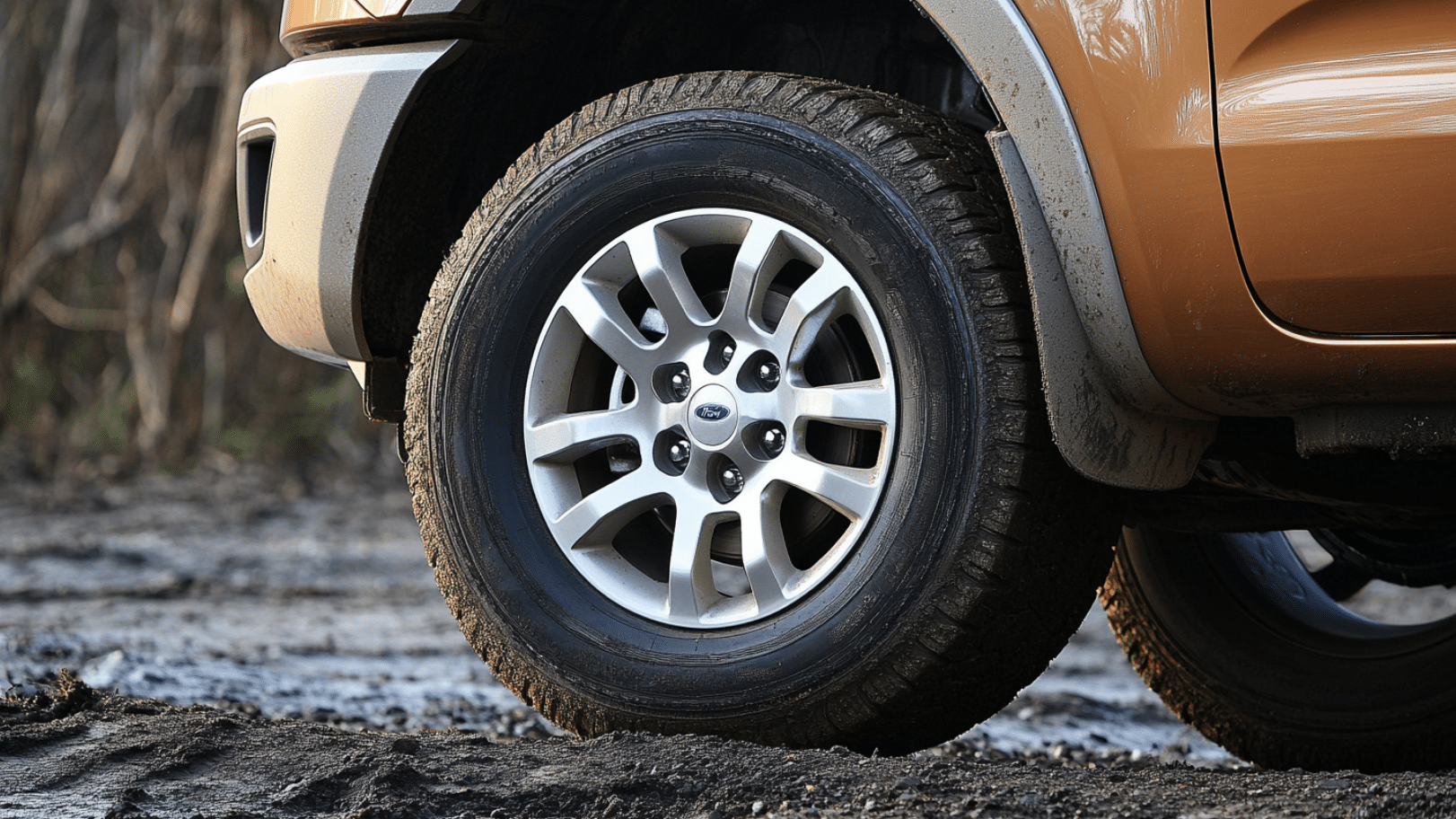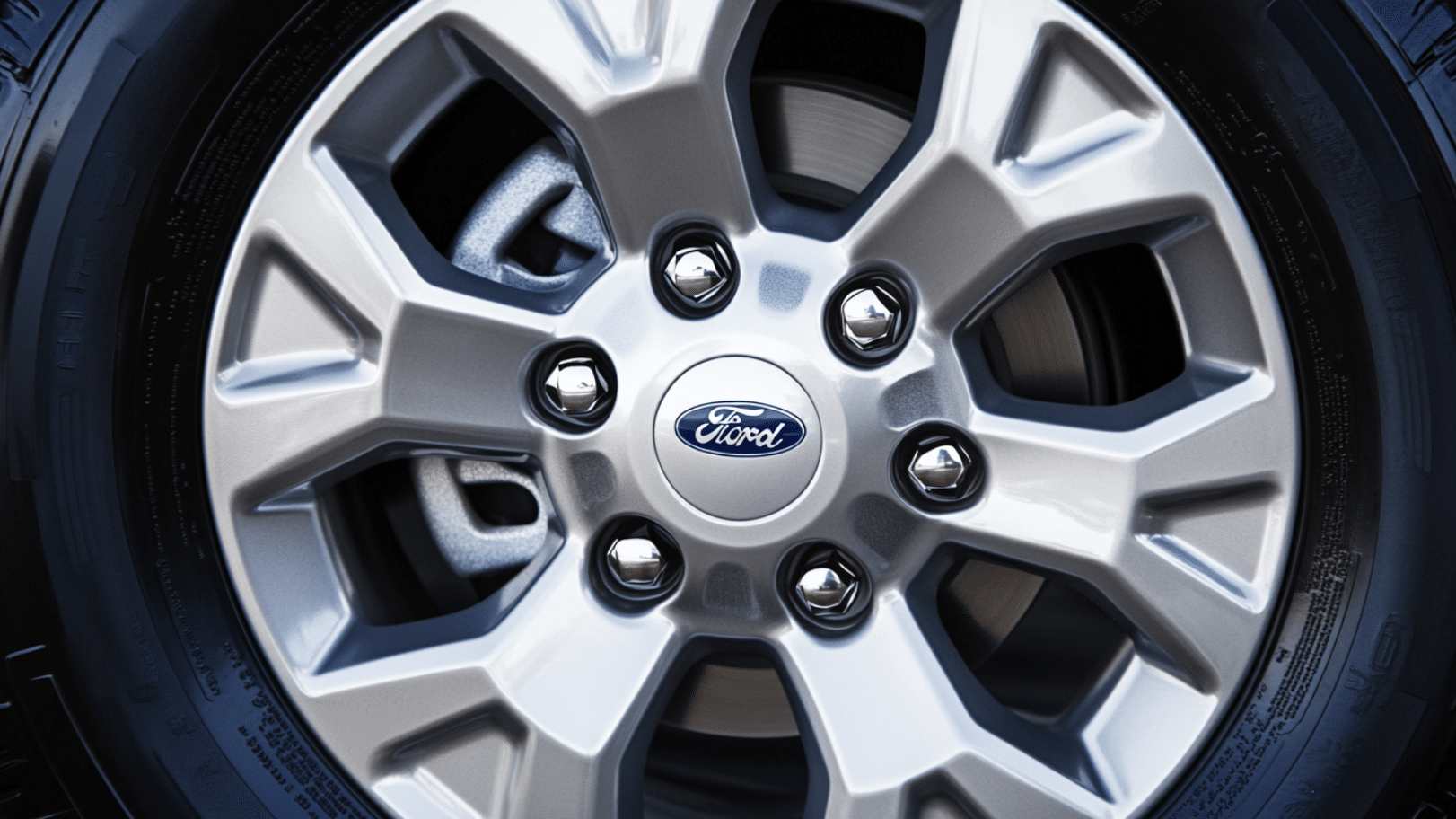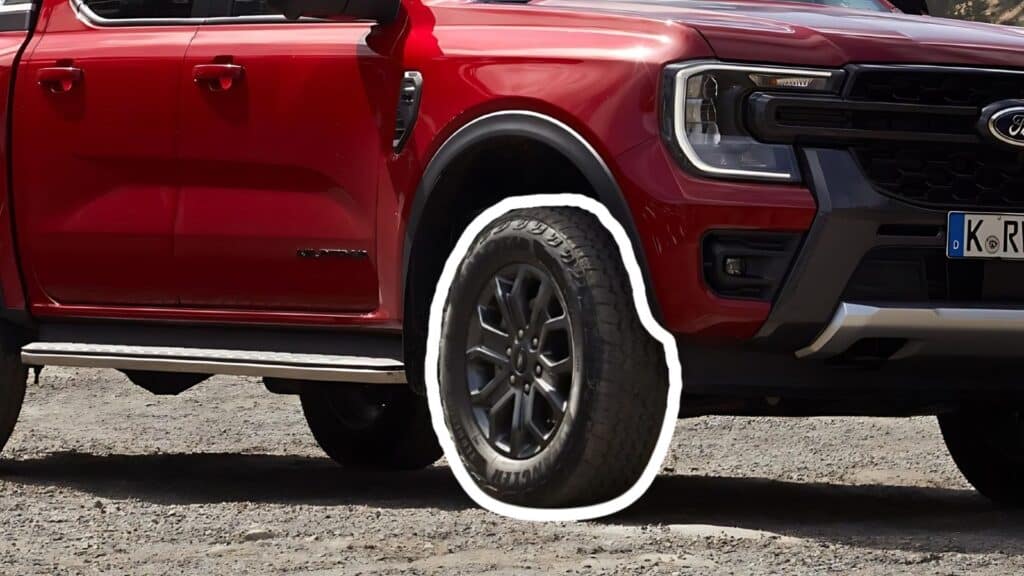All of us have been there – staring at our wheels, wondering about those mysterious Ford Ranger lug patterns. It’s a common puzzle for truck owners, especially when considering new rims or tires.
The lug pattern can make or break your wheel choices, affecting looks and performance. In this guide, I’ll break down the Ford Ranger lug patterns to make it easy for you to understand and use.
I’ll explain the different generational patterns, explain how they impact your truck’s setup, and offer practical advice for wheel selection.
By the end, you’ll be equipped with the knowledge to make informed decisions about your Ranger’s wheels, ensuring your ride’s perfect fit and style.
The Ford Ranger Lug Pattern: Understanding Its Evolution and Impact
1. Current Ford Ranger Lug Pattern
From 2019 onwards, the Ford Ranger has used a standardized lug pattern of 6×139.7 mm (6×5.5 inches), with 6 factory studs in a circle with a 5.5-inch diameter.
This consistent pattern across models and years is key for wheel compatibility, easing the process of finding suitable replacements or upgrades.
Benefits of 6-lug setup:
- The 6-lug setup was chosen for solid engineering reasons. It offers improved load distribution, boosting the truck’s ability to handle heavy loads and challenging terrain.
- It also enhances structural integrity, improving the wheel assembly’s overall durability.
- This standardization provides Ranger owners with a wide array of compatible wheels and aftermarket parts, increasing customization options and ensuring part availability globally.
2. Historical Evolution
The Ford Ranger’s lug pattern has changed notably over time. Early models (1982-2012) typically had a 5×4.5 inch (114.3 mm) pattern, fitting the lighter, more compact designs of that time.
Around 2012, some models, particularly those with diesel engines, began using the 6×5.5 inch pattern. This shift aligned the Ranger with global standards, increasing its versatility in international markets.
Several technical factors drove this change.
As vehicles gained weight due to new features and safety equipment, a stronger wheel setup became necessary.
The move to the 6×5.5 inch pattern has greatly increased the Ranger’s load-bearing ability, benefiting those who use their trucks for work or extensive off-road driving.
The new setup allows forces to spread more evenly, lowering stress on individual lugs and improving overall durability.
Additionally, the more mighty lug pattern has enhanced the Ranger’s off-road performance, providing a stronger base for larger, more aggressive tires used in off-road conditions. This results in better grip and stability on rough ground.
Understanding the Ford Ranger’s lug pattern goes beyond knowing numbers. It’s about recognizing the flexibility and options it provides for upkeep and personalization, helping you make smart choices about your truck’s wheel setup for the best performance and appearance.
Detailed Specifications for Ford Ranger Wheels

Regarding Ford Ranger wheels, understanding the key specifications is crucial for proper fitment and optimal performance. Let’s descend into the critical details:
1. Center Bore Diameter: The center bore diameter for recent Ford Rangers is typically 93.1 mm. This measurement is vital for ensuring the wheel is correctly centered on the hub, which affects balance and prevents vibration. A precise fit here is essential for your wheels’ smooth operation and longevity.
2. Thread Size: Thread size is another critical factor. Most modern Rangers use an M12 x 1.5 thread size. This specification determines how the lug nuts secure the wheel to the hub. Using the correct thread size is non-negotiable for safety and proper wheel attachment.
3. Torque Specifications: Torque specifications are often overlooked but are crucial for wheel security. For the Ford Ranger, the recommended torque is usually around 135 Nm. Adhering to this spec ensures the wheels are tight enough for safety but not over-tightened, which could lead to damage.
4. Wheel Offset and Backspacing: Wheel offset and backspacing play significant roles in your Ranger’s look and function. These measurements determine how far in or out the wheel sits relative to the hub. Proper offset ensures adequate clearance for suspension components and affects the truck’s handling characteristics.
5. Fitment Challenges with Aftermarket Wheels: Fitment challenges can arise with aftermarket wheels. Some wheels may require spacers to achieve the right offset or to clear brake components. It’s crucial to consider these factors when selecting new wheels to avoid clearance issues or the need for extensive modifications.
Impact of Lug Pattern on Vehicle Performance

1. Handling and Stability
The lug pattern of your Ford Ranger directly influences its handling and stability. A correctly matched lug pattern ensures proper wheel fitment, which is essential for balanced weight distribution and optimal vehicle dynamics.
Conversely, using wheels with an incorrect pattern can lead to problems like wheel wobble or vibration, compromising safety and comfort.
2. Tire Compatibility
Tire compatibility is another crucial factor affected by the lug pattern. The right pattern allows for a wide range of tire size options, giving you flexibility in choosing tires that suit your driving needs.
However, mismatched patterns can severely limit your choices or necessitate the use of adapters, which can affect the overall performance of your vehicle.
3. Impact on Driving Experience
The lug pattern’s impact extends to the overall driving experience. Proper fitment improves road feel, more precise steering, and overall vehicle control. This is particularly noticeable during challenging driving conditions or when carrying heavy loads.
4. Aftermarket Considerations
It’s worth noting that changing to aftermarket wheels with a different lug pattern often requires additional modifications. These might include new hub-centric rings, lug nuts, or wheel adapters.
While these modifications can allow for more wheel options, they can also affect the vehicle’s handling characteristics and should be cautiously approached.
The lug pattern is more than just a technical specification—it’s a key factor in your Ranger’s performance, safety, and versatility. Understanding its importance helps you make informed decisions about maintaining or upgrading your vehicle’s wheels.
Practical Applications and Vehicle Compatibility
Shared Lug Pattern Across Brands
The Ford Ranger’s 6×139.7 mm lug pattern, shared by several other vehicle brands, opens up a world of wheel options.
This pattern is common among Toyota 4Runners, FJ Cruisers, Tacomas, and certain Nissan models like the Frontier and Pathfinder.
Some GMC and Chevrolet trucks also use this configuration. However, the lug pattern alone doesn’t guarantee compatibility.
Critical Factors for Wheel Swaps
When considering wheel swaps, you must verify other critical factors. The center bore diameter is particularly important – the Ranger’s 93.1 mm center bore might not match other vehicles using the same lug pattern.
Hub-centricity is another key consideration, as it affects how the wheel sits on the hub and impacts overall performance and safety.
Wheel spacers can be valuable tools when working with different wheels. They allow you to adjust the wheel offset, providing better clearance for larger tires or upgraded brake systems.
Spacers can help achieve the desired stance or prevent rubbing issues. However, it’s crucial to use high-quality spacers and properly install them.
Importance of High-Quality Lug Nuts
Speaking of quality, the importance of using top-notch lug nuts cannot be overstated. These small components play a massive role in keeping your wheels attached to your vehicle. Investing in high-quality, correctly sized lug nuts is essential for safety and peace of mind.
Considerations for Modifications
Sometimes, achieving optimal fitment requires additional modifications. For instance, you might need to machine the hub bore of a wheel to fit the Ranger’s hub properly.
While this can expand your wheel options, it’s important to consider the implications. Such modifications may affect your vehicle’s warranty and have legal ramifications, especially in regions with strict vehicle modification laws.
Consulting Professionals for Safe Modifications
When contemplating these modifications, it’s wise to consult with professionals who understand both the technical aspects and the legal landscape.
They can guide you in making safe, compliant modifications that enhance your Ranger’s performance and appearance without compromising its integrity or legal standing.
Remember, while the shared lug pattern offers flexibility, ensuring proper fitment involves more than just matching numbers.
It requires a comprehensive understanding of your vehicle’s specifications and careful consideration of how modifications affect its performance and legal status.
Conclusion
Understanding the Ford Ranger lug pattern is crucial for selecting the right wheels and tires for your truck.
The shift from the 5×4.5-inch to the 6×5.5-inch pattern has enhanced load capacity, off-road performance, and wheel compatibility.
Knowing these details helps ensure proper fitment, improving stability and safety.
If you’re upgrading or replacing wheels, this knowledge allows for better customization and performance.
By considering factors like the lug pattern, center bore, and offset, you can confidently choose wheels that suit your Ranger’s needs, ensuring optimal functionality and style for your truck’s driving experience.
Frequently Asked Questions
What is the Offset on Ford Ranger Wheels?
The offset on Ford Ranger wheels typically ranges from +55mm to +44mm, depending on the model year and trim level.
This positive offset means the wheel’s mounting surface is closer to the outside edge of the wheel.
What Size Tires Can I Put on My Ford Ranger?
The tire size for a Ford Ranger depends on the model year and trim. Common sizes include 255/70R16, 255/65R17, and 265/60R18.
However, you can often fit slightly larger tires with minor modifications. Always check your owner’s manual for specific recommendations.


